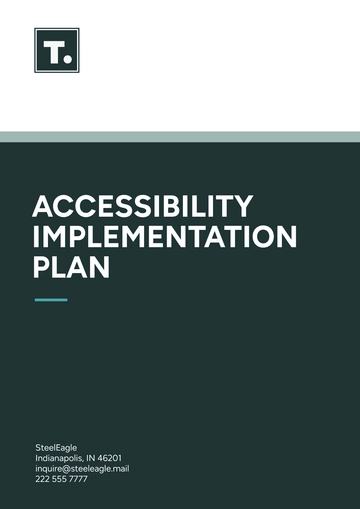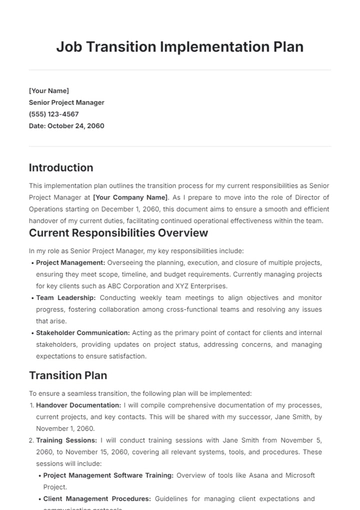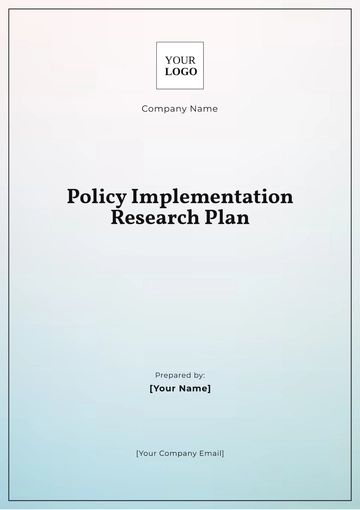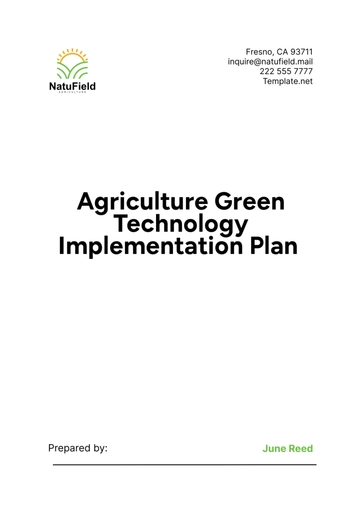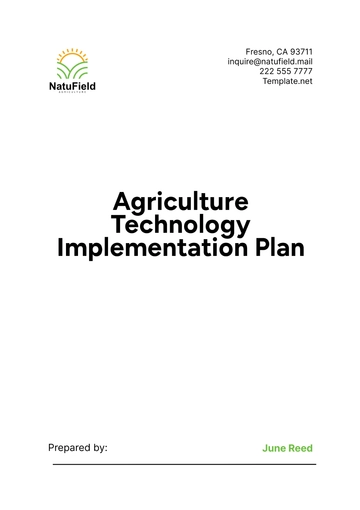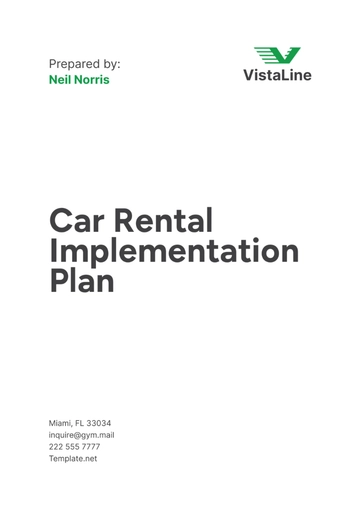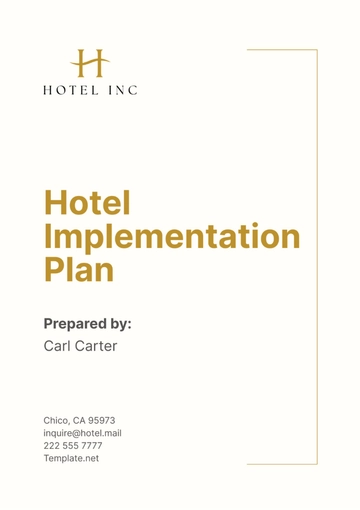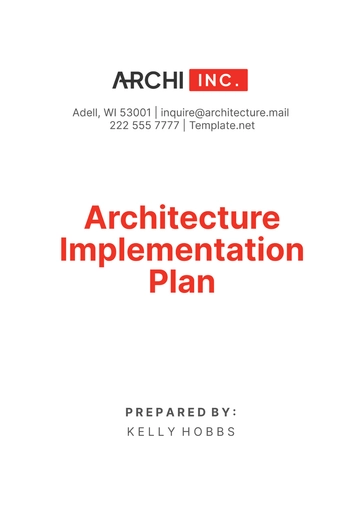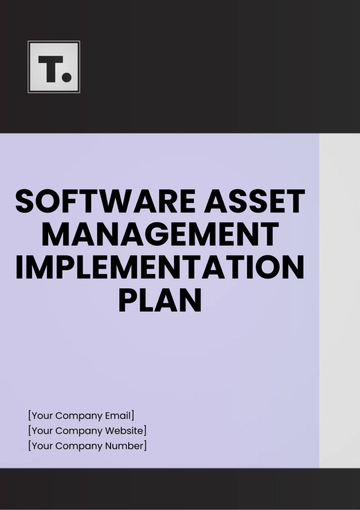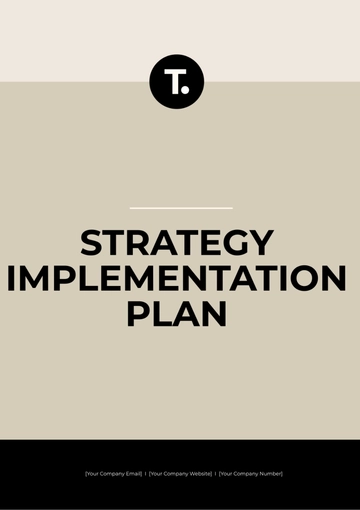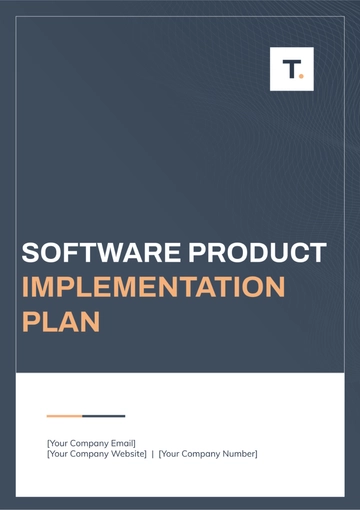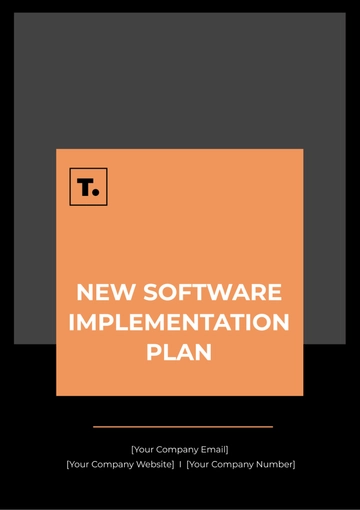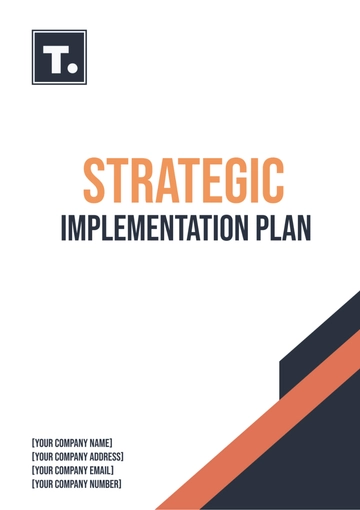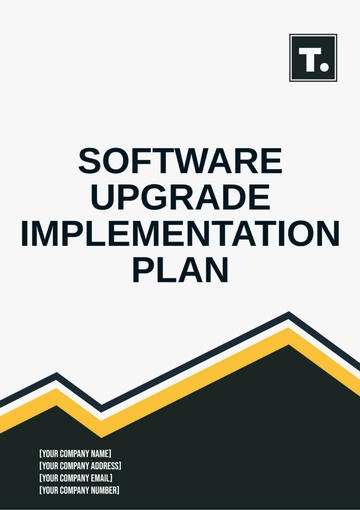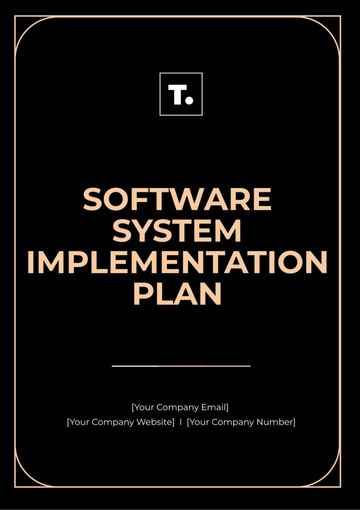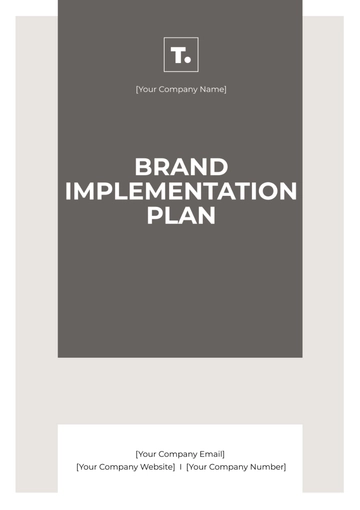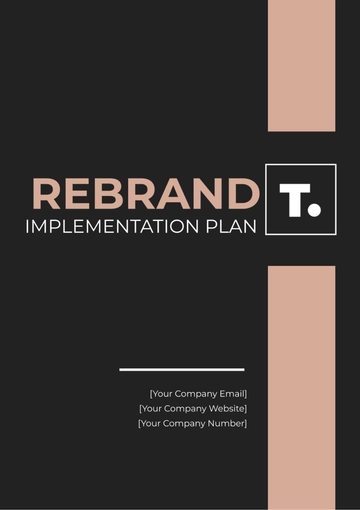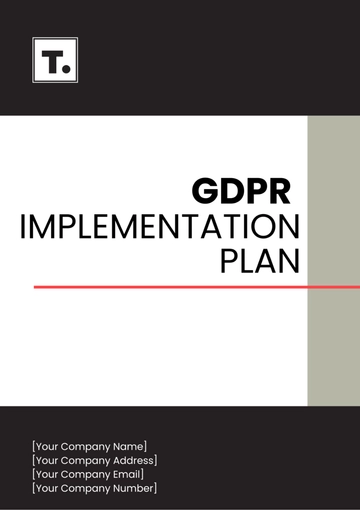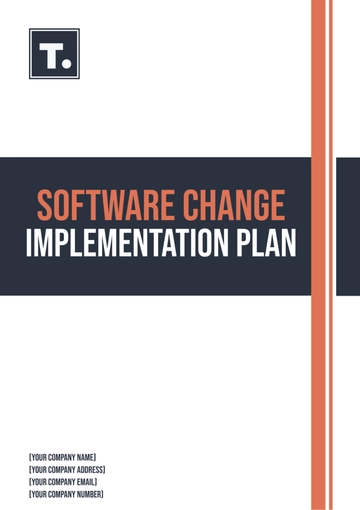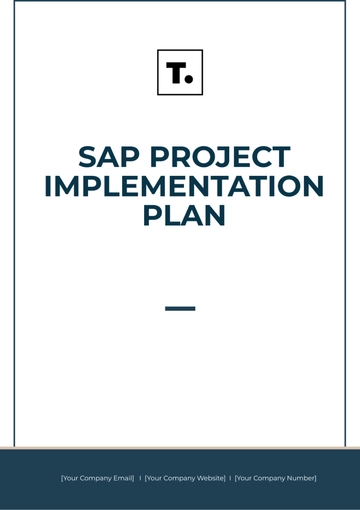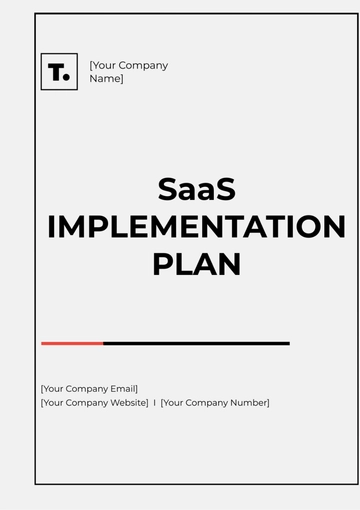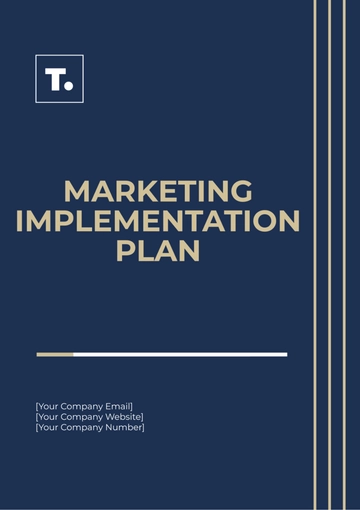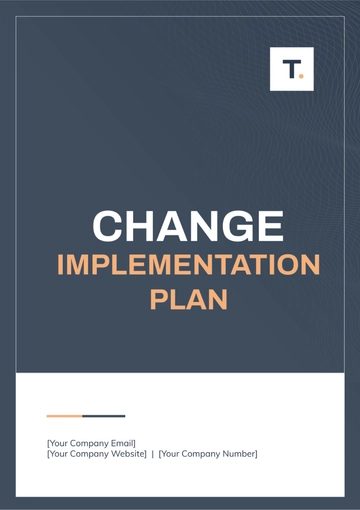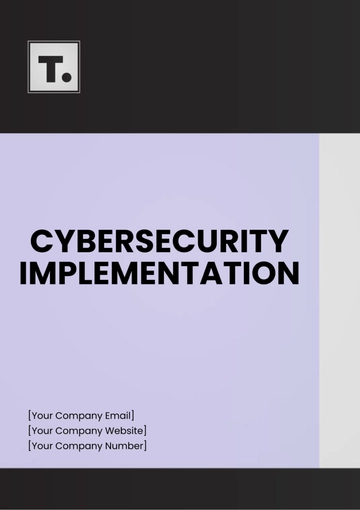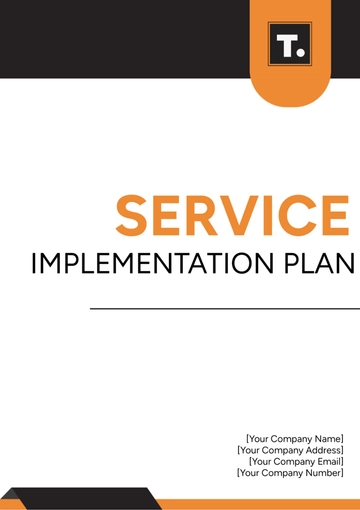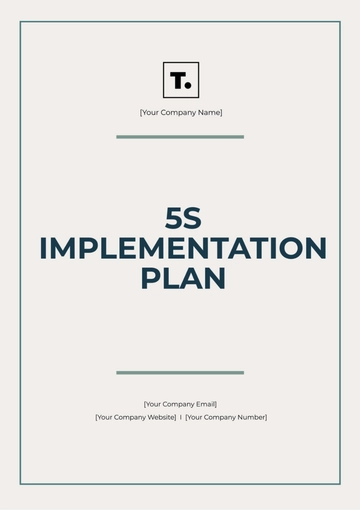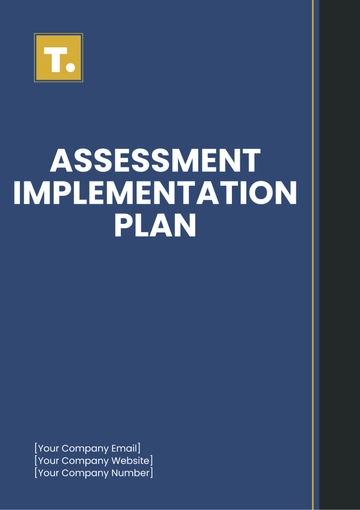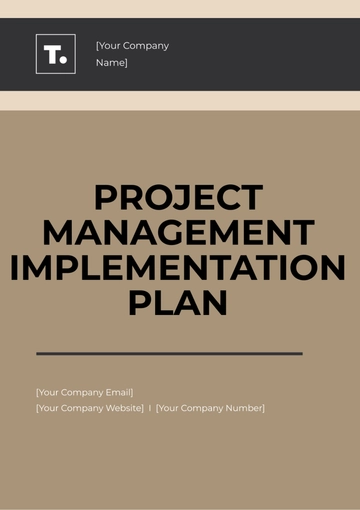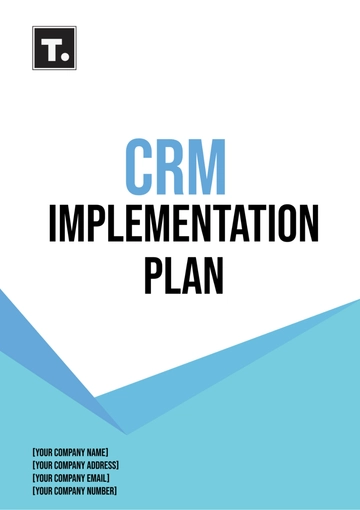Free Detailed Implementation Plan
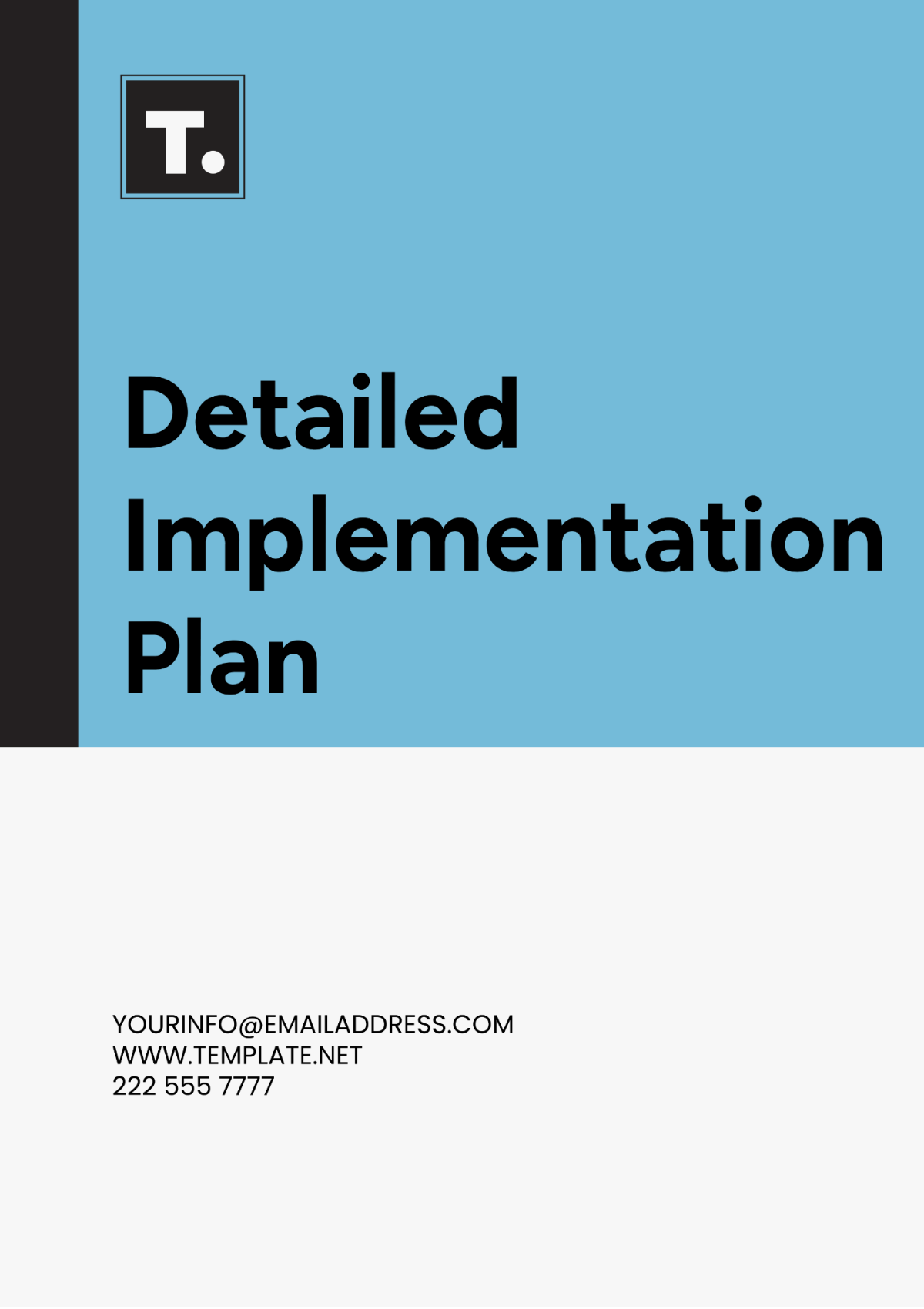
I. Introduction
Objective: Provide [YOUR NAME] with a structured and detailed approach to implementing a business strategy, focusing on achieving specific organizational goals, optimizing resources, and ensuring effective execution.
Name: [YOUR NAME]
Company Name: [YOUR COMPANY NAME]
Department: [DEPARTMENT NAME]
Plan Start Date: [START DATE OF THE PLAN]
Plan End Date: [END DATE OF THE PLAN]
Purpose: The purpose of this detailed implementation plan is to outline the critical steps, resources, and timelines necessary to execute the business strategy successfully. This plan aims to ensure that all activities are aligned with the strategic goals of [YOUR COMPANY NAME], that resources are used efficiently, and that potential risks are mitigated. By providing a clear roadmap, this plan helps to coordinate efforts across different departments and stakeholders, ensuring everyone is working towards the same objectives.
II. Strategic Goals and Objectives
Overall Goals: Define the broad, long-term achievements that align with the company's mission and vision.
Specific Objectives: Break down these goals into detailed, measurable targets. For example:
Increase Market Share: Achieve a 10% increase in market share within the next year.
Launch New Products: Successfully launch three new products by the end of the fiscal year.
Enhance Customer Satisfaction: Improve customer satisfaction scores by 15% over the next six months.
III. Key Performance Indicators (KPIs)
KPIs Table:
Goal | Key Performance Indicator | Target Value | Measurement Method |
|---|---|---|---|
Increase Market Share | Market share percentage | 10% increase | Market analysis reports |
Launch New Products | Number of new products launched | 3 products | Product launch timelines |
Enhance Customer Satisfaction | Customer satisfaction score | 15% improvement | Customer surveys and feedback |
Explanation: KPIs are essential for tracking progress and measuring success. Each KPI should be specific, measurable, attainable, relevant, and time-bound (SMART). Regularly reviewing KPIs helps to ensure that the implementation is on track and allows for adjustments as needed.
IV. Implementation Timeline
Timeline Table:
Milestone | Description | Start Date | End Date | Responsible Party |
|---|---|---|---|---|
Initial Planning | Detailed project planning and kick-off | [START DATE 1] | [END DATE 1] | [RESPONSIBLE PARTY 1] |
Resource Allocation | Allocate resources and assign tasks | [START DATE 2] | [END DATE 2] | [RESPONSIBLE PARTY 2] |
Development Phase | Product development and testing | [START DATE 3] | [END DATE 3] | [RESPONSIBLE PARTY 3] |
Marketing Campaign | Launch marketing and sales efforts | [START DATE 4] | [END DATE 4] | [RESPONSIBLE PARTY 4] |
Product Launch | Official product launch and rollout | [START DATE 5] | [END DATE 5] | [RESPONSIBLE PARTY 5] |
Post-Launch Evaluation | Review and analyze performance | [START DATE 6] | [END DATE 6] | [RESPONSIBLE PARTY 6] |
Explanation: A detailed timeline helps to visualize the sequence of tasks and their dependencies. Each milestone represents a significant achievement and includes start and end dates to ensure timely completion. Assigning responsible parties ensures accountability and clarity in task ownership.
V. Resource Allocation
Resource Allocation Table:
Resource Type | Description | Quantity | Responsible Department |
|---|---|---|---|
Human Resources | Project managers, developers, marketers | 20 team members | Human Resources |
Financial Resources | Budget for development and marketing | $500,000 | Finance |
Technology Resources | Software, hardware, tools | Various tools | IT |
Physical Resources | Office space, meeting rooms | Available facilities | Operations |
Explanation: Efficient resource allocation is crucial for the successful implementation of the strategy. Clearly define the types of resources required, including human resources, financial resources, technology, and physical space. Assign departments responsible for managing these resources to ensure accountability and efficient use.
VI. Risk Management
Risk Management Plan:
Risk Identification: Identify potential risks that could impact the implementation.
Examples: Delays in product development, budget overruns, market competition
Mitigation Strategies: Develop strategies to mitigate each identified risk.
Examples: Establishing a contingency budget, creating backup plans for delays, conducting competitive analysis
Explanation: Effective risk management involves identifying potential risks, assessing their impact, and developing mitigation strategies. Regularly review and update the risk management plan to address new risks as they arise.
VII. Communication Plan
Communication Plan Table:
Audience | Message | Communication Method | Frequency |
|---|---|---|---|
Executive Team | Project progress and updates | Reports, Meetings | Weekly |
Project Team | Task assignments, deadlines | Emails, Meetings | Daily |
Stakeholders | Major milestones, achievements | Newsletters, Reports | Monthly |
Customers | Product launch information | Marketing materials | As needed during campaign |
Explanation: Clear and consistent communication is essential for keeping all stakeholders informed and engaged. Identify the key audiences, the messages to be conveyed, the communication methods, and the frequency of communication. This ensures that everyone is on the same page and that any issues are promptly addressed.
VIII. Monitoring and Evaluation
Monitoring Plan: Outline the methods and tools for tracking progress towards strategic goals.
Tools and Techniques: Project management software, performance dashboards, regular progress reports
Frequency of Monitoring: Weekly check-ins, monthly reviews
Responsible Parties: Project managers, team leaders, department heads
Explanation: Continuous monitoring and evaluation are crucial for ensuring the plan remains on track. Use a combination of tools and techniques to monitor progress and schedule regular check-ins to assess performance. Assign specific individuals or teams to oversee the monitoring process to ensure accountability.
IX. Review and Adjustment
Review Plan: Schedule regular reviews to assess progress and make necessary adjustments.
Review Frequency: Monthly, quarterly
Review Process: Data analysis, feedback collection, decision-making meetings
Adjustment Strategies: Revising timelines, reallocating resources, updating risk management plans
Explanation: Regular reviews provide opportunities to reflect on progress, address challenges, and refine the plan. Establish a clear review frequency and outline the review process. Develop strategies for adjusting the plan based on review findings to ensure it remains relevant and effective in achieving the strategic goals.
X. Conclusion
Summary: Summarize the key points of the implementation plan and reaffirm the commitment to achieving the strategic goals. Highlight the importance of collaboration, accountability, and continuous improvement throughout the implementation process.
Next Steps: Outline the immediate next steps following the approval of the implementation plan. These could include kickoff meetings, resource allocation, and initial communication efforts to set the stage for successful execution.
- 100% Customizable, free editor
- Access 1 Million+ Templates, photo’s & graphics
- Download or share as a template
- Click and replace photos, graphics, text, backgrounds
- Resize, crop, AI write & more
- Access advanced editor
Introducing our Detailed Implementation Plan Template, exclusively crafted for efficiency seekers. Available on Template.net, this editable and customizable gem streamlines project management. Tailor tasks effortlessly using our AI Editor Tool. Elevate your planning prowess with this indispensable resource. Get organized, get efficient, get ahead
You may also like
- Finance Plan
- Construction Plan
- Sales Plan
- Development Plan
- Career Plan
- Budget Plan
- HR Plan
- Education Plan
- Transition Plan
- Work Plan
- Training Plan
- Communication Plan
- Operation Plan
- Health And Safety Plan
- Strategy Plan
- Professional Development Plan
- Advertising Plan
- Risk Management Plan
- Restaurant Plan
- School Plan
- Nursing Home Patient Care Plan
- Nursing Care Plan
- Plan Event
- Startup Plan
- Social Media Plan
- Staffing Plan
- Annual Plan
- Content Plan
- Payment Plan
- Implementation Plan
- Hotel Plan
- Workout Plan
- Accounting Plan
- Campaign Plan
- Essay Plan
- 30 60 90 Day Plan
- Research Plan
- Recruitment Plan
- 90 Day Plan
- Quarterly Plan
- Emergency Plan
- 5 Year Plan
- Gym Plan
- Personal Plan
- IT and Software Plan
- Treatment Plan
- Real Estate Plan
- Law Firm Plan
- Healthcare Plan
- Improvement Plan
- Media Plan
- 5 Year Business Plan
- Learning Plan
- Marketing Campaign Plan
- Travel Agency Plan
- Cleaning Services Plan
- Interior Design Plan
- Performance Plan
- PR Plan
- Birth Plan
- Life Plan
- SEO Plan
- Disaster Recovery Plan
- Continuity Plan
- Launch Plan
- Legal Plan
- Behavior Plan
- Performance Improvement Plan
- Salon Plan
- Security Plan
- Security Management Plan
- Employee Development Plan
- Quality Plan
- Service Improvement Plan
- Growth Plan
- Incident Response Plan
- Basketball Plan
- Emergency Action Plan
- Product Launch Plan
- Spa Plan
- Employee Training Plan
- Data Analysis Plan
- Employee Action Plan
- Territory Plan
- Audit Plan
- Classroom Plan
- Activity Plan
- Parenting Plan
- Care Plan
- Project Execution Plan
- Exercise Plan
- Internship Plan
- Software Development Plan
- Continuous Improvement Plan
- Leave Plan
- 90 Day Sales Plan
- Advertising Agency Plan
- Employee Transition Plan
- Smart Action Plan
- Workplace Safety Plan
- Behavior Change Plan
- Contingency Plan
- Continuity of Operations Plan
- Health Plan
- Quality Control Plan
- Self Plan
- Sports Development Plan
- Change Management Plan
- Ecommerce Plan
- Personal Financial Plan
- Process Improvement Plan
- 30-60-90 Day Sales Plan
- Crisis Management Plan
- Engagement Plan
- Execution Plan
- Pandemic Plan
- Quality Assurance Plan
- Service Continuity Plan
- Agile Project Plan
- Fundraising Plan
- Job Transition Plan
- Asset Maintenance Plan
- Maintenance Plan
- Software Test Plan
- Staff Training and Development Plan
- 3 Year Plan
- Brand Activation Plan
- Release Plan
- Resource Plan
- Risk Mitigation Plan
- Teacher Plan
- 30 60 90 Day Plan for New Manager
- Food Safety Plan
- Food Truck Plan
- Hiring Plan
- Quality Management Plan
- Wellness Plan
- Behavior Intervention Plan
- Bonus Plan
- Investment Plan
- Maternity Leave Plan
- Pandemic Response Plan
- Succession Planning
- Coaching Plan
- Configuration Management Plan
- Remote Work Plan
- Self Care Plan
- Teaching Plan
- 100-Day Plan
- HACCP Plan
- Student Plan
- Sustainability Plan
- 30 60 90 Day Plan for Interview
- Access Plan
- Site Specific Safety Plan
